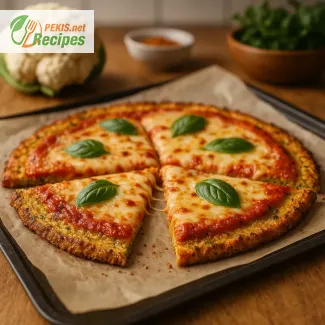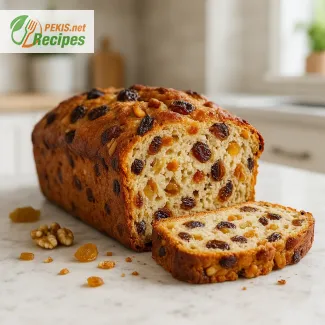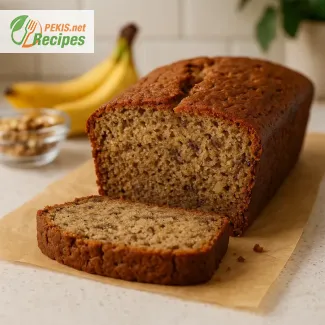
Discover the Best Way to Enjoy Pizza Without the Carbs
A flavorful and healthy twist on classic pizza nights
Few dishes in the world of comfort food spark as much universal joy as pizza. But for those following a low-carb lifestyle, navigating the world of dough, cheese, and toppings can feel like a minefield of carbohydrates. Enter the cauliflower pizza crust — a game-changing alternative that allows pizza lovers to indulge without the guilt. Made from one of the most versatile vegetables in the kitchen, this healthy pizza crust delivers on both flavor and texture, making it a must-try for anyone looking to cut back on carbs without sacrificing taste.
What makes the low-carb cauliflower pizza crust so appealing is its ability to mimic the chewy, crispy, and slightly chewy texture of traditional pizza dough — all while using cauliflower as the base. This alternative is not only grain-free and gluten-free, but it also caters to a variety of dietary needs, from keto to paleo to vegetarian. The result is a crispy cauliflower crust that’s rich in flavor and strong enough to hold your favorite toppings, whether you’re craving classic Margherita or a bold BBQ chicken combo.
Why cauliflower makes a perfect pizza crust base
Cauliflower is no longer just a side dish. Over the past few years, it has transformed into a superstar ingredient for those seeking healthier substitutes for high-carb foods. Thanks to its neutral flavor and excellent binding properties, cauliflower blends effortlessly with other ingredients like eggs and cheese to create a cohesive and pliable dough-like base.
The real magic lies in the preparation. When properly drained, pressed, and baked, cauliflower takes on a satisfying texture that is both crispy on the outside and tender on the inside. It provides a subtle nutty taste that pairs beautifully with a wide range of sauces, herbs, and toppings, offering a customizable pizza crust that aligns with your taste preferences.
Perfect for gluten-free and keto-friendly diets
With the rise of dietary trends such as keto and gluten-free eating, the cauliflower crust has solidified its place in mainstream cooking. For people managing food sensitivities or those looking to reduce their intake of refined carbohydrates, this crust is more than just a fad — it’s a reliable and delicious solution.
By omitting traditional flour and instead using cauliflower, low-carb pizza becomes not just possible, but enjoyable. The texture remains satisfying, while the carb count is significantly reduced. You can now indulge in a full pizza experience without disrupting your dietary goals.
How to get the best texture and flavor from your crust
One of the keys to a successful homemade cauliflower pizza crust lies in the moisture content. Cauliflower naturally holds a lot of water, which, if not removed, can result in a soggy base. That’s why it’s essential to thoroughly squeeze out any excess liquid before mixing the ingredients. A clean kitchen towel or cheesecloth works best for this step.
Once drained, the cauliflower is combined with seasonings, cheese, and egg to form a pliable dough. Pressed thinly onto parchment paper and baked until golden, it forms a sturdy base ready for your favorite toppings. To enhance the crispness, some prefer to flip the crust halfway through baking — a technique that brings it even closer to the real deal.
Topping ideas for your cauliflower crust pizza
The beauty of a cauliflower-based pizza crust is its adaptability. Whether you prefer classic tomato and mozzarella, gourmet toppings like prosciutto and arugula, or even vegan alternatives, the crust can support it all. Because the flavor profile is neutral, it complements both bold and subtle ingredients equally well.
A few standout combinations include:
- Garlic cream sauce, spinach, and goat cheese
- Pesto, cherry tomatoes, and fresh basil
- Buffalo cauliflower, red onion, and blue cheese
- Smoked salmon, cream cheese, and capers for a brunch-inspired twist
Whatever your taste, the cauliflower pizza base provides the perfect canvas for culinary creativity.
Family-friendly and meal-prep approved
Not only is the low-carb cauliflower pizza crust a fantastic choice for adults watching their carbs, but it's also a hit with kids. Its familiar shape and customizable toppings make it an excellent option for family pizza nights, allowing everyone to choose their favorites while still keeping things nutritious.
Even better, the crust can be made in advance and frozen, making weeknight dinners quicker and easier. Simply prepare and pre-bake the crusts, store them in the freezer, and pull them out when needed. You’ll have homemade low-carb pizza ready in minutes — no delivery necessary.
A guilt-free pizza experience worth trying
Whether you’re on a low-carb journey, looking to incorporate more vegetables into your meals, or simply curious about healthier cooking alternatives, this recipe offers a balanced and satisfying solution. The crispy texture, rich flavor, and infinite topping possibilities prove that you don’t have to give up pizza to eat well.
- Preheat the oven to 220°C (430°F). Line a baking tray with parchment paper.
- Prepare the cauliflower: Cut the cauliflower into florets and place them in a food processor. Pulse until you achieve a rice-like texture.
- Steam or microwave: Place the riced cauliflower in a microwave-safe bowl and cook for 5–7 minutes, or until softened. Allow to cool slightly.
- Remove moisture: Transfer the steamed cauliflower into a clean kitchen towel or cheesecloth and squeeze out as much liquid as possible. This step is crucial to prevent a soggy crust.
- Mix the dough: In a mixing bowl, combine the drained cauliflower, grated mozzarella, parmesan, egg, oregano, basil, garlic powder, and salt. Mix until a dough forms.
- Shape the crust: Place the mixture onto the prepared baking tray and press it into a round or rectangular crust about 1 cm (⅓ inch) thick. Drizzle the surface lightly with olive oil.
- Bake the crust: Bake for 20 minutes or until golden brown and firm to the touch.
- Add toppings: Remove from the oven, spread the tomato sauce evenly over the crust, and sprinkle with shredded mozzarella.
- Final bake: Return to the oven for an additional 10 minutes, or until the cheese is melted and bubbly.
- Garnish and serve: Remove from the oven and top with fresh basil leaves if desired. Slice and enjoy warm.
Enhancing Your Cauliflower Pizza Crust for Maximum Flavor and Texture
Practical tips and creative variations to upgrade your low-carb pizza experience
Creating a low-carb cauliflower pizza crust at home offers the ideal combination of flavor, nutrition, and customization. While the base recipe provides an excellent alternative to traditional dough, there are several ways to elevate the taste, structure, and nutritional profile of this dish even further. From enhancing the crispness of the crust to infusing deeper flavors and avoiding common pitfalls, these tips will help you perfect your homemade cauliflower pizza every time.
How ingredient swaps can improve taste and texture
One of the best parts of working with cauliflower crust is its versatility. A few smart ingredient swaps can make a significant impact on the end result.
Add almond flour for better structure
Adding a couple of tablespoons of almond flour (20–30 g) to the crust mixture can enhance both the texture and stability. This addition gives the dough a slight nuttiness and helps it hold together better without compromising the low-carb goal.
Try a blend of cheeses for deeper flavor
Instead of using only mozzarella, consider blending in aged cheeses like grana padano, asiago, or sharp cheddar. These cheeses have more intense flavors and will provide the crust with a richer umami taste. The mozzarella remains essential for stretch and melt, but even a small quantity of another cheese can offer an elevated culinary experience.
Incorporate fresh herbs into the dough
Mixing in chopped fresh parsley, oregano, basil, or thyme directly into the dough adds an aromatic quality that dried spices alone can’t achieve. Fresh herbs bring brightness and complexity to the otherwise neutral cauliflower base.
Use roasted garlic instead of powder
Replacing garlic powder with a small amount of mashed roasted garlic creates a sweeter, more robust background flavor. Roasting the garlic beforehand softens its intensity and brings a mellow, earthy depth to the crust.
The benefits of homemade cauliflower crust over store-bought options
While ready-made cauliflower crusts are widely available, homemade versions offer clear advantages in taste, texture, and healthfulness.
Control over ingredients
Making the crust at home allows you to avoid preservatives, added starches, and sugars that are commonly found in commercial versions. You know exactly what’s going into your food — from the type of cheese to the amount of salt.
Freshness and texture
Store-bought crusts are often frozen or packaged, which can lead to soggy or rubbery textures once baked. A freshly made crust, however, retains a crisp edge, golden color, and pleasantly chewy center, all of which are lost in mass-produced alternatives.
Customization and flexibility
Homemade crusts offer the freedom to adjust seasoning, thickness, and size according to your preferences. Whether you want a thinner, crispier base or a slightly doughier middle, your kitchen gives you total control.
Common mistakes and how to avoid them
Even though the recipe appears simple, several missteps can hinder your success. Understanding what to avoid can make all the difference.
Not removing enough moisture
Perhaps the most common mistake is failing to squeeze out enough water from the cooked cauliflower. Any excess moisture will result in a soggy crust that won’t crisp properly. Always use a cheesecloth or clean kitchen towel to wring out every last drop of water.
Overloading with cheese
While cheese is a key ingredient for binding and flavor, using too much can make the crust greasy and heavy. Stick to the recommended amount or use lower-moisture cheeses to strike the right balance.
Skipping pre-baking the crust
Adding toppings before the crust is fully baked leads to a soft, undercooked base. Always pre-bake the crust until golden before layering on sauces and toppings to ensure the base is firm and crisp.
Making the crust too thick
A thick crust may seem appealing but can result in a mushy interior. Keep the dough evenly spread and about 1 cm (⅓ inch) thick for optimal results.
Healthier enhancements for extra nutrition
If your goal is to make the recipe even more nutrient-dense, a few simple upgrades can go a long way.
Boost fiber with flaxseed or chia
Mixing in a tablespoon of ground flaxseed or chia seeds can improve the fiber content while also helping with binding. This trick is especially useful for those omitting eggs or reducing dairy.
Add protein with cottage cheese
Blend a spoonful of low-fat cottage cheese into the dough for an extra protein boost and creamy texture. Make sure to drain it well beforehand to prevent excess moisture.
Use vegetable-based toppings
Beyond the crust itself, consider your toppings as a source of nutrition. Roasted bell peppers, mushrooms, spinach, zucchini, and artichokes all bring different textures and health benefits without compromising flavor.
Creative topping suggestions to complement the crust
The right toppings can transform your cauliflower crust pizza into a restaurant-quality dish. Think beyond the usual tomato and mozzarella.
- Greek-style: Tzatziki drizzle, olives, red onions, and feta
- Southwest flair: Black beans, grilled corn, spicy chicken, avocado
- Mediterranean: Sun-dried tomatoes, roasted eggplant, pine nuts
- Breakfast-inspired: Scrambled eggs, turkey bacon, spinach, and cherry tomatoes
Each of these combinations complements the crust’s natural earthiness and adds a distinctive culinary character to your pizza.
Making your cauliflower crust even crispier
Crispness is key to a successful low-carb pizza. Here are some advanced methods to take it up a notch.
Use a pizza stone or steel
Baking your crust on a preheated pizza stone or steel can dramatically improve the bottom’s texture. The added heat intensity ensures the crust becomes golden and crunchy, similar to traditional thin-crust pizzas.
Air-dry the crust before topping
Once pre-baked, let the crust cool slightly and air-dry for a few minutes before adding toppings. This pause allows steam to escape and keeps the crust from softening under the moisture of the sauce.
Brush with egg white for extra strength
Brushing the surface of the crust with egg white before the second bake can create a thin, crisp layer that seals the top and provides additional support for heavy toppings.
Why the cauliflower pizza crust trend is here to stay
This recipe is more than just a novelty — it’s a sustainable way to enjoy pizza while maintaining a balanced diet. Whether you’re trying to reduce carbs, manage gluten intolerance, or simply explore creative cooking methods, the cauliflower crust checks all the boxes.
Its adaptability, ease of preparation, and ability to impress both picky eaters and gourmet enthusiasts make it a permanent fixture in modern kitchens. With the right ingredients, preparation techniques, and a touch of creativity, you can turn this simple dish into a culinary highlight.
Allergens present in the recipe:
- Milk (mozzarella and parmesan)
- Eggs
Contains gluten: No
Suggestions for allergen and gluten replacement:
- Milk: Use dairy-free shredded cheese alternatives made from coconut or almond milk.
- Egg: Replace with a flaxseed egg (1 tbsp flaxseed meal + 3 tbsp water, rested 10 min).
- All cheese options can be swapped with vegan cheese blends.
- Vitamin C: 45 mg – boosts immune function and supports collagen production
- Vitamin K: 16 mcg – important for blood clotting and bone health
- Calcium: 210 mg – essential for strong bones and muscle function
- Potassium: 410 mg – helps regulate fluid balance and nerve signals
- Folate (B9): 55 mcg – supports cell growth and DNA formation
- Beta-carotene: 90 mcg – converts to vitamin A, supports eye health
- Quercetin: 4 mg – anti-inflammatory, supports heart and immune health
- Kaempferol: 2 mg – helps protect cells from oxidative stress
- Glucosinolates (from cauliflower): 15 mg – may reduce cancer risk and support detoxification pathways





